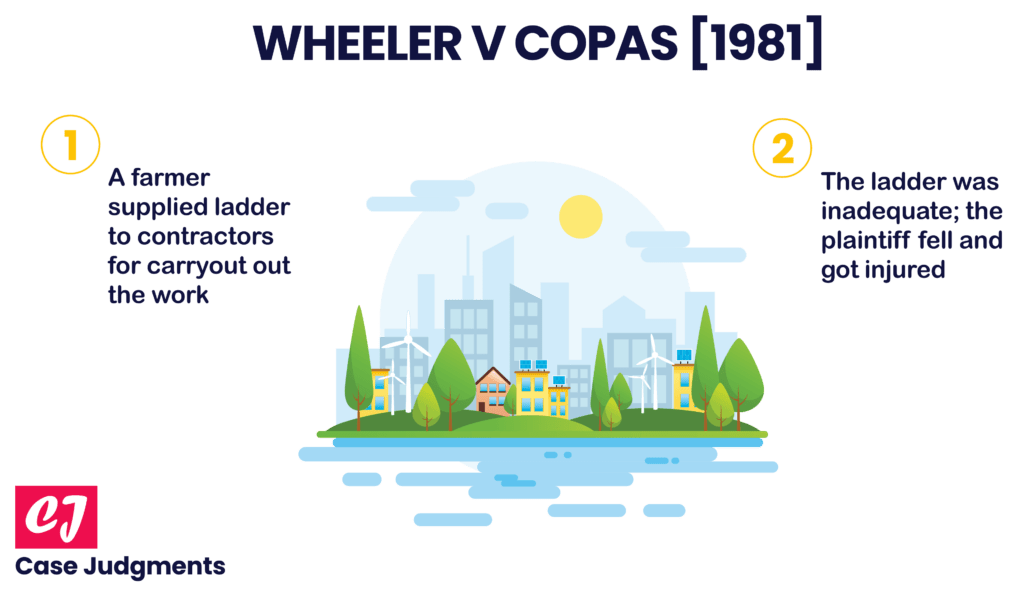Case name & citation: Wheeler v Copas [1981] 3 All ER 405
- Jurisdiction: England and Wales
- Year of the case: 1981
- The learned judge: Chapman J
- Area of law: Occupier’s liability; contributory negligence
What is the case about?
Wheeler v Copas [1981] is a tort law case that dealt with the question of whether a “ladder” can satisfy the definition of “premises” in order to constitute liability under the Occupiers’ Liability Act 1957. Further, it dealt with the duty of a person to supply appropriate materials to the contractors for the construction.
Facts of the case (Wheeler v Copas)
A farmer engaged a firm of bricklayers for the purpose of building a house on his farm. He contracted for labour only and undertook to provide the required materials and equipment. The plaintiff was a partner in the bricklaying company. For carrying out the work, he needed a ladder and selected one of the ladders from the farm. While using it, the ladder collapsed and the plaintiff was injured. He sued the defendant (farmer) for damages for personal injury on the basis that the defendant was liable under the Occupiers’ Liability Act 1957.
What was the issue here?
In this case, the legal issue was whether the defendant owed the plaintiff a duty of care. If this could be shown, it was critical to determine the extent to which each of the parties had contributed to the negligence and accident.
Judgment of the Court in Wheeler v Copas
The judge decided that the farmer was not liable under the Occupiers’ Liability Act 1957 since even though the Act covers moveable structures, such as vessels, vehicles and aircraft, and that it could apply to a ladder, the defendant could not be deemed to be an “occupier”. This is so because he had handed over the ladder to the contractors; it was no longer under his control.
After this, the court considered that the defendant still owed a duty of care. He was negligent as he did not provide suitable equipment for the job and failed to equip the plaintiff with an adequate ladder. But this liability was limited due to the fact that the plaintiff should have recognized the problem with the ladder before beginning his work. Hence, he contributed to the negligence.
List of references:
- https://core.ac.uk/download/pdf/71675155.pdf
- https://swarb.co.uk/wheeler-v-copes-qbd-1981/
- https://www.lawteacher.net/cases/wheeler-v-copas.php
You might also like:
More from tort law:




